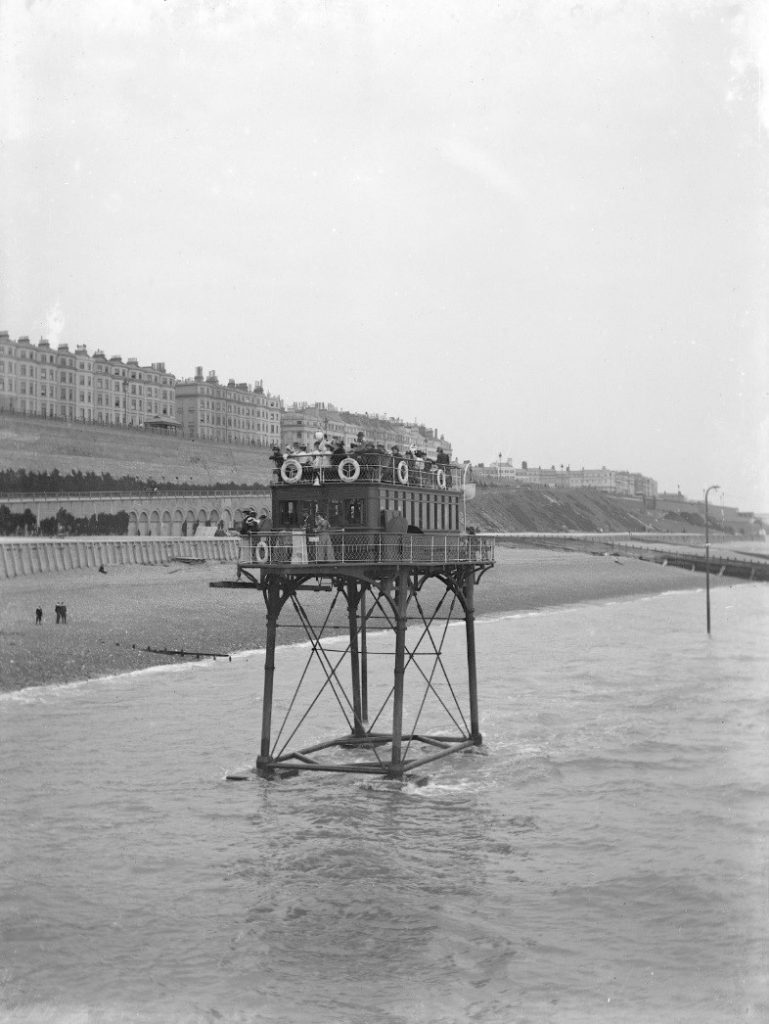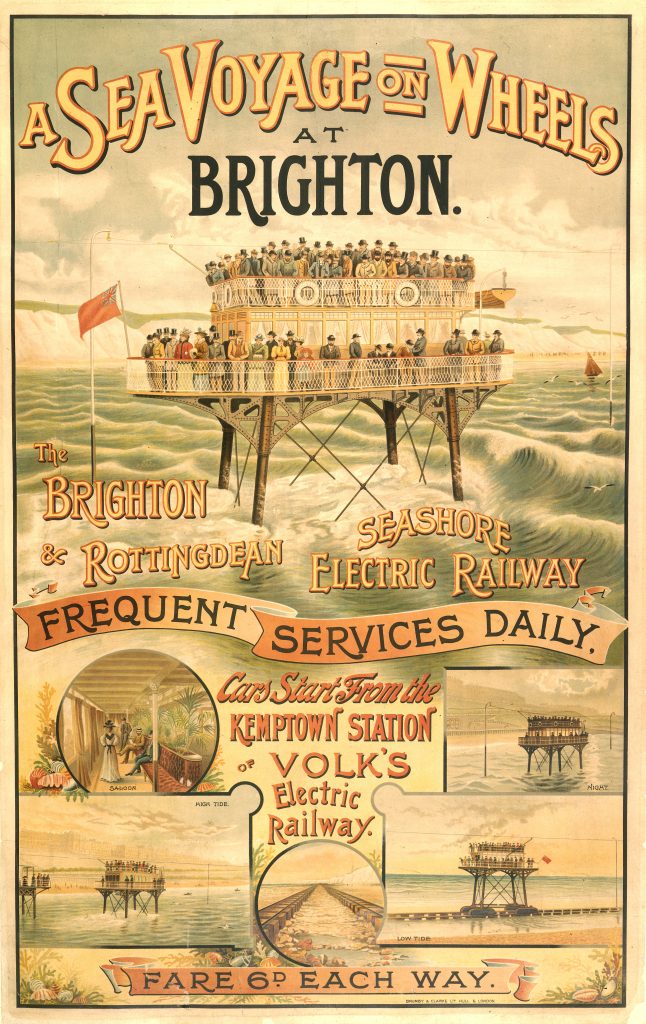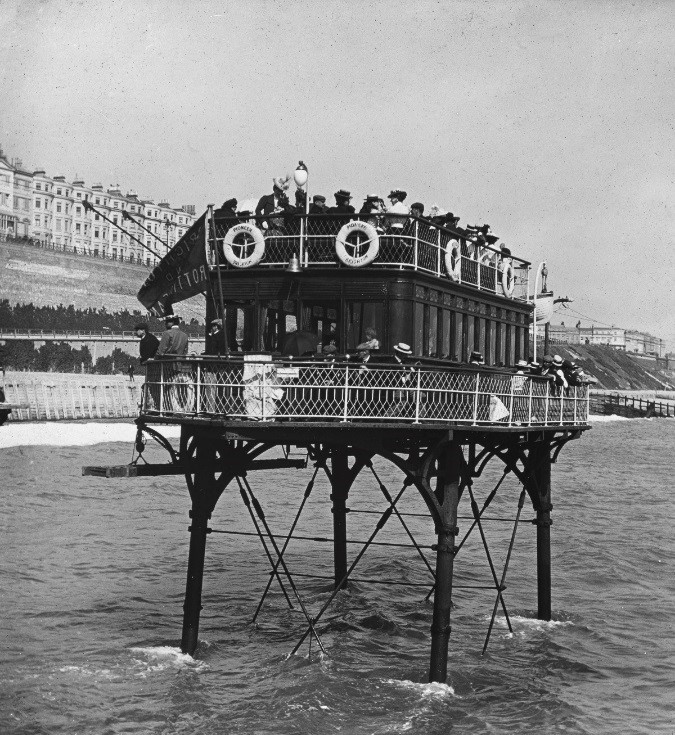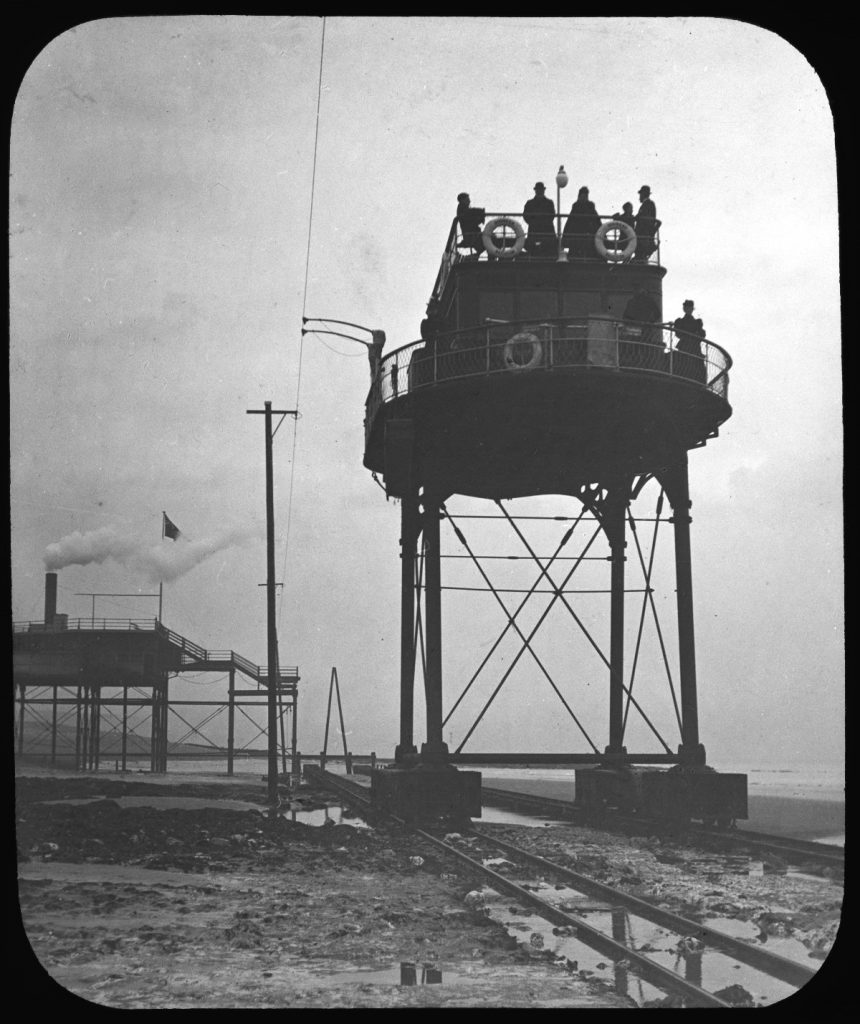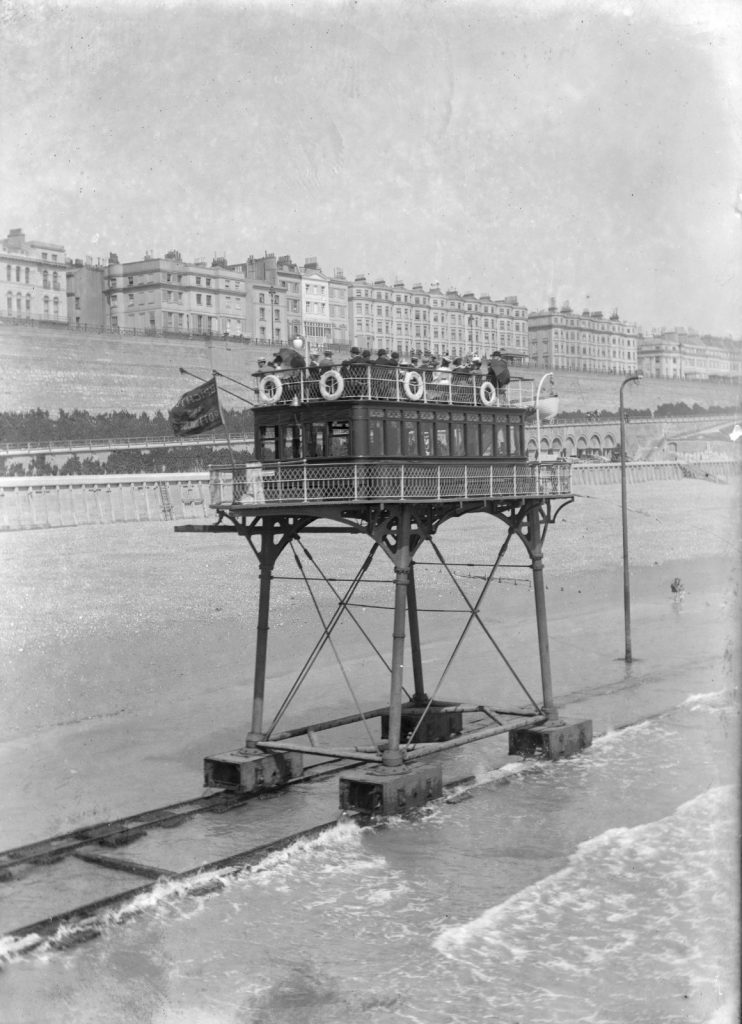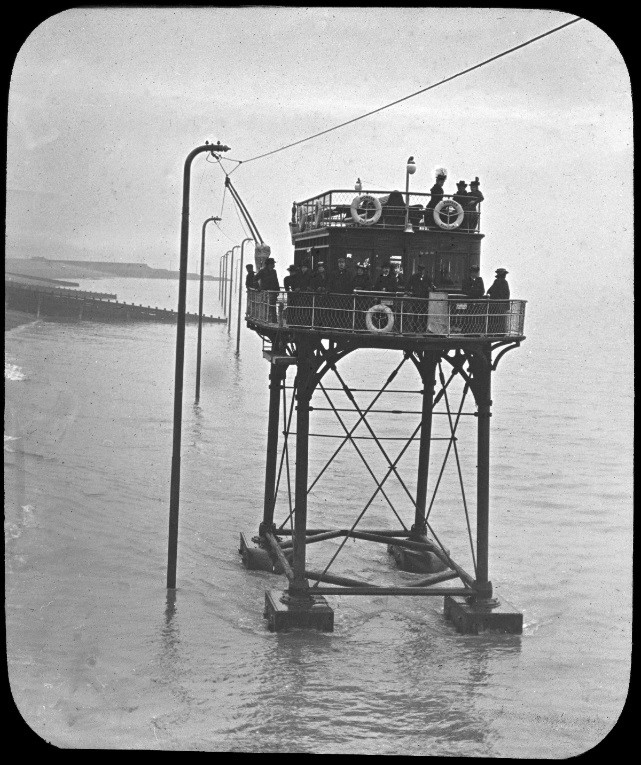And Now For Something Completely Different: Daddy Long-Legs — A Weird and Wonderful Railway
Editor's Note: In honor of the late Josef Lesser, the Co-author of Hollywood's Trains and Trolleys
Photographic Archives Volunteer Nick sheds some light on an unusual discovery at the National Railway Museum's archives.
One of the most unusual photographic collections in the National Railway Museum’s archives which I’ve come across as a volunteer cataloguer is one by Ellis Kelsey, an amateur photographer who lived in Eastbourne, Sussex, in the late 19th and early 20th centuries. His work was regularly exhibited at the Royal Photographic Society (RPS) exhibitions in London between 1899 and 1914.
A collection of 29 of his photographs was donated to the museum, some of railway-related subjects and others recording aspects of Sussex life.
The series includes six images of a unique electric seaside railway by Magnus Volk, the electrical engineer who designed and built Volk’s Electric Railway which opened on the seafront at Brighton in 1883 and is still in operation to this day. The Electric Railway ran eastwards as far as Paston Place, but the terrain made it impracticable to extend it to Rottingdean, so Volk decided to construct the Brighton and Rottingdean Seashore Electric Railway which would run on rails under the sea close to the shoreline.
Construction started in 1894 and the railway was opened in November 1896. Passengers were carried in a large tramcar-like carriage on a deck mounted on long stilts. It was named ‘Pioneer’ but popularly known as ‘daddy long-legs’. It was equipped with a lifeboat and lifebelts, and had to be operated by a qualified sea captain.
Power was provided by an electricity cable mounted on tall poles along the shoreline, connected by trolley poles to motors in the bogies at the foot of the stilts.
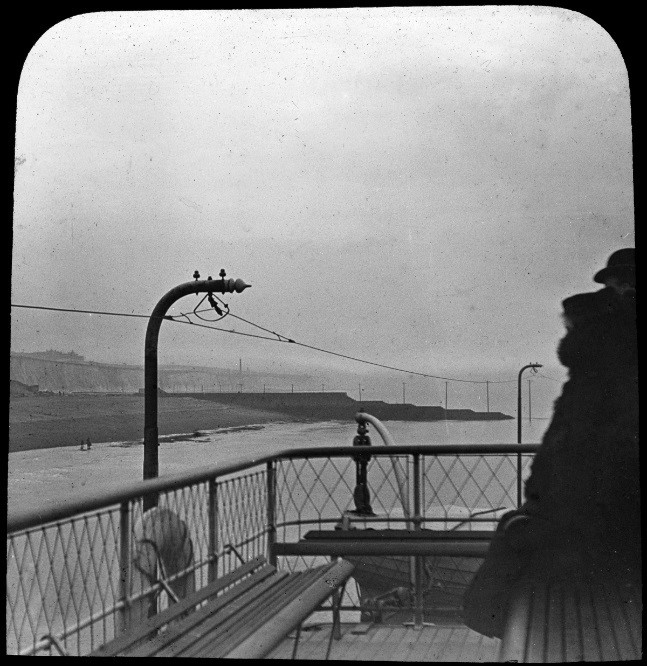
Only a few days after it opened, the railway was put out of action by a severe storm. It reopened in July 1897 and ran without major incident until damage to the trackbed meant it couldn’t operate during the summer of 1900, causing a serious loss of business to Magnus Volk. Then in 1901, Brighton Corporation exercised its right to remove some of the track to enable sea defences to be built, and the project came to an end.
Read more about the ‘Daddy long-legs’, with more photographs, on the Volk’s Electric Railway Association website.
More Articles
- National Archives Records Lay Foundation for Killers of the Flower Moon: The Osage Murders and the Birth of the FBI
- Nichola D. Gutgold - The Most Private Roosevelt Makes a Significant Public Contribution: Ethel Carow Roosevelt Derby
- Oppenheimer: July 28 UC Berkeley Panel Discussion Focuses On The Man Behind The Movie
- "Henry Ford Innovation Nation", a Favorite Television Show
- Julia Sneden Wrote: Going Forth On the Fourth After Strict Blackout Conditions and Requisitioned Gunpowder Had Been the Law
- Jo Freeman Reviews: Gendered Citizenship: The Original Conflict Over the Equal Rights Amendment, 1920 – 1963
- Jo Freeman Writes: It’s About Time
- Jo Freeman Reviews: Lady Bird Johnson: Hiding in Plain Sight
- Women in Congress: Biographical Profiles of Former Female Members of Congress
- Updated With Key Takaways: Watch on YouTube House Select Committee Hearings at House on January 6th: "So many citizens are downplaying on what happened that day"







